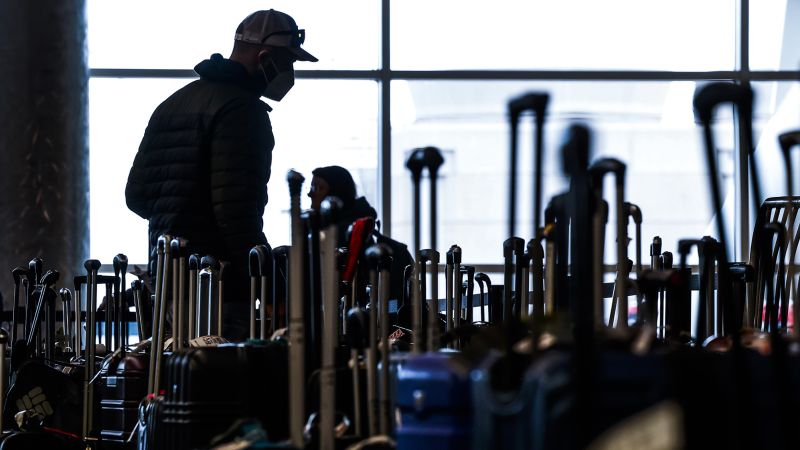Editor’s Note: A version of this story appeared in CNN Business’ Nightcap newsletter. To get it in your inbox, sign up for free, here.
Part of the deal with being the boss is you get paid top dollar in exchange for taking on the most risk.
In theory, at least.
But the pandemic era has, in many cases, flipped that idea on its head.
See here: Recent filings illustrate the way CEOs are still lavishly compensated even when massive screw-ups happen on their watch. For example:
Southwest Airlines
- Bob Jordan, who took over as CEO in February 2022 — 10 months before the airline’s epic holiday travel service meltdown — got a 75% pay hike last year, my colleague Chris Isidore reports.
- Jordan’s total compensation package last year came to $5.3 million, up from $3 million in 2021.
- In January, Southwest reported a loss for the fourth quarter because of the fiasco and warned the costs from those problems will result in another loss in the first quarter. The meltdown cost the airline about $800 million.
Norfolk Southern
- Alan Shaw, who became CEO of Norfolk Southern in May 2022, saw his compensation double last year to a total of $9.8 million.
- He was on the job a full eight months before one of his trains derailed in East Palestine, Ohio, releasing toxic chemicals into the water, ground and air there.
- Last month, Shaw sold $448,000 worth of the company’s stock to personally set up a scholarship endowment fund for seniors at East Palestine High School.
To be sure, those compensation decisions were made by independent boards well before the onset of those companies’ crises. And neither of these guys had been there long enough to be held solely responsible. But the timing of the disclosures — with public outrage still simmering is, to say the least, awkward.
A Southwest representative told CNN that the December cancellations did factor into the bonuses paid out to employees. “The bonuses paid out would have been higher if not for the holiday disruption,” the representative said, adding that “80% of Bob’s compensation is based on company performance.”
A representative for Norfolk Southern pointed to the railroad’s latest proxy statement, noting that the board of directors “approved new performance metrics for 2023 and our management team’s compensation is tied in part to performance on safety metrics.” Southwest did not respond to a request for comment.
Southwest and Norfolk Southern are hardly outliers in their largesse.
The median pay for S&P 500 CEOs was $14.5 million in 2021 — a 17% increase from the previous year, according to Equilar. That is, of course, more than keeping up with inflation.
Executive pay — a mix of salary, bonuses and other benefits — is always top-tier. But the distance between what the boss makes and what their typical employee makes has only been getting wider in recent years.
It’s a difficult trend to meaningfully change in Corporate America. The boards that make decisions on CEO pay are usually stacked with executives or former executives from other companies who benefit from the system. And at the end of the day, punishing the CEO may not fix whatever ails the company.
“What you don’t want is an emergency replacement of your CEO, because that could be a disaster,” said James Reda, national managing director at consulting firm Gallagher. “You don’t want to throw the company into more chaos, which could happen if there’s a vacuum at the top.”
Still, the desire to keep things steady at the top can be its own liability.
Often, CEOs of distressed companies — rather than seeing pay cut — receive so-called retention bonuses to encourage leaders not to flee the sinking ship.
Those became a commonly used loophole to shower executives with pay early in 2020, as dozens of companies hurtled toward bankruptcy.
Hertz, for example, laid off more than 14,000 staff as the car rental giant spiraled in April of that year. And days before it filed for bankruptcy in May, it paid out more than $16 million to 340 executives to keep them in place for the restructuring process.
It’s a bad look when a company can’t pay its employees or its debts but it can prioritize payments to its already handsomely compensated bosses.
The message such bonuses send is: “When times are good, give your CEO a huge reward. When times are bad, give your CEO a huge reward for not abandoning the company,” said Sarah Anderson, director of the Global Economy Project at the Institute for Policy Studies, a progressive think tank.
After a dreadful year in the stock market — 2022 was the S&P 500’s worst year since 2008 — some corporate boards appear to be clocking the bad optics.
Earlier this year, a handful of industry leaders including Goldman Sachs, Morgan Stanley and Apple, announced they were slashing the pay of some of Corporate America’s highest-paid bosses.
Of course, you don’t need to shed any tears for these guys (they are mostly men, of course). Apple CEO Tim Cook’s 40% pay cut still leaves him with $49 million in total compensation, my colleague Matt Egan reported.
But, in general, the prospect of a recession and layoffs may end up curbing some of the more excessive compensation packages.
“When all the numbers are crunched, 2022 is going to be a flat year for CEO pay,” said Reda. “Certain industries will continue to go up, certain other industries will take a beating. But I think overall you’ll see pretty flat numbers because it wasn’t a good year for bonuses.”
As for the bad optics of certain company disasters, Reda said: “Sometimes everything’s rosy even though it’s not — the market fell apart in March of 2022 … a lot of the awards were made prior to that.”
Enjoying Nightcap? Sign up and you’ll get all of this, plus some other funny stuff we liked on the internet, in your inbox every night. (OK, most nights — we believe in a four-day work week around here.)
Read the full article here










